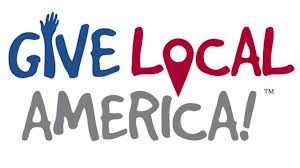 I may not be the sharpest knife in the drawer, but when I get beat over the head with something enough times over the course of a year it becomes obvious that I’m staring at a trend. LOL! In this case, I am referencing an increasingly popular activity sprouting up all over the place — Giving Day.
I may not be the sharpest knife in the drawer, but when I get beat over the head with something enough times over the course of a year it becomes obvious that I’m staring at a trend. LOL! In this case, I am referencing an increasingly popular activity sprouting up all over the place — Giving Day.
I was first introduced to the idea of a concentrated one day push while working with a client in Valparaiso, Indiana. Their local community foundation had organized a day where local donors could make an online contribution and designate it to any number of local non-profit organizations. Of course, there were incentives such matching dollars and contests.
As many of you know, I’ve spent the last five months in West Texas and New Mexico working with 18 different agencies on a variety of organizational capacity building activities. While I was down south avoiding a brutal Midwest winter, I was once again introduced to another statewide Giving Day in New Mexico. Like the one in Valparaiso, it was being sponsored by a handful of different community foundations.
Finally, last week I returned home from my temporary assignment and started wading through a ton of mail that was waiting for me. While sifting through that pile, I came across a letter from another agency promoting their community’s Giving Day and they were asking me to make an online contribution.
As I clicked around on Google, I discovered there is a national Giving Day initiative called “Give Local America!” being sponsored by communities, non-profit organizations and an online giving portal company called Kimbia.
As I said earlier, I may not be the brightest or the quickest, but I suspect that I’m looking at a trend in the non-profit sector. 🙂
The Knight Foundation defines a community Giving Day as follows:
“A Giving Day is a powerful 24-hour online fundraising competition that unites a community around local causes. Hosted by the area’s community foundation, the Giving Day raises money through a single online donation platform. A Giving Day is a great way to build community, connect donors to local nonprofits, teach organizations to use digital tools and generate excitement about your community foundation.”
The foundation developed an online “playbook” for people who want to organize one of these events in their community. If you’re interested, click here to check it out.
 As I started playing around with these ideas in my head, I’ve come to the conclusion that this doesn’t necessarily have to be a community-wide event sponsored by a community foundation or a United Way. (However, I do think a community-wide approach organized by a foundation or United Way is preferable)
As I started playing around with these ideas in my head, I’ve come to the conclusion that this doesn’t necessarily have to be a community-wide event sponsored by a community foundation or a United Way. (However, I do think a community-wide approach organized by a foundation or United Way is preferable)
I believe individual non-profit organizations can take these same principles and develop a focused day of giving for themselves. Perhaps, it is something at the end of your Spring annual campaign pledge drive focused on smaller donors. Or maybe it is a year-end giving strategy with a Thanksgiving theme done in conjunction with #GivingTuesday.
Regardless of whether it is community-focused or agency-focused, there are a few simple best practices that power the successes associated with planning these events. You can find those best practices at the other end of the Knight Foundation link (see link above). If you aren’t planning such an event, but you’re participating in one, then here are a few tips for engaging the most number of people in making a contribution in your agency’s name:
- challenge gifts are an important part of the call to action (don’t just rely on the challenge being offered by the organizer . . . additional matching gifts from your major donors will drive even more traffic on your behalf to the online giving portal)
- pre-event publicity is crucial to raise awareness among your donors (e.g. targeted mail, email, etc)
- day-of-event solicitation (e.g. emails, blog posts, Facebook/Twitter/LinkedIn chatter, etc) are important strategies to drive online traffic to the giving page
- post-event recognition and stewardship for an entire year leading up to your next Giving Day build loyalty and a strong base of sustainable giving
Does your agency participate in a community-wide Giving Day? If so, what best practices have you used and found work well? Please use the comment box below to share your thoughts and experiences.
Here’s to your health!
Erik Anderson
Founder & President, The Healthy Non-Profit LLC
www.thehealthynonprofit.com
erik@thehealthynonprofit.com
http://twitter.com/#!/eanderson847
http://www.facebook.com/eanderson847
http://www.linkedin.com/in/erikanderson847

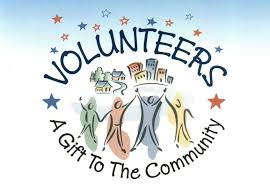 Yesterday, I attended my first
Yesterday, I attended my first 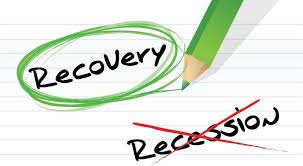 That is it . . . I am fed up and can’t stop myself from saying something that has been on my mind for a little while now. Can non-profit organizations please stop running around and telling anyone who will listen that the economy is bad and the recession is hurting their agency?
That is it . . . I am fed up and can’t stop myself from saying something that has been on my mind for a little while now. Can non-profit organizations please stop running around and telling anyone who will listen that the economy is bad and the recession is hurting their agency? A Chinese woman had two large pots, each hung on the ends of a pole which she carried across her neck.. One of the pots had a crack in it while the other pot was perfect and always delivered a full portion of water.
A Chinese woman had two large pots, each hung on the ends of a pole which she carried across her neck.. One of the pots had a crack in it while the other pot was perfect and always delivered a full portion of water.


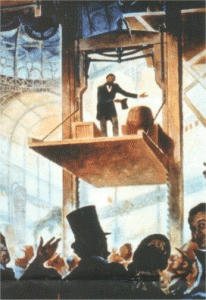 Thousands of spectators flooded into the Crystal Palace Exposition in New York City.
Thousands of spectators flooded into the Crystal Palace Exposition in New York City. But I under appreciate the downside risks. I, consequently, short change the risk mitigation section of the proposal. In fact, sometimes I omit it entirely.
But I under appreciate the downside risks. I, consequently, short change the risk mitigation section of the proposal. In fact, sometimes I omit it entirely.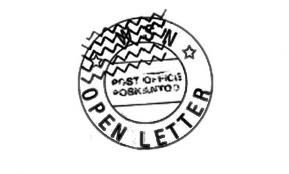 My online friend, Marc Pitman is hosting this month’s Nonprofit Blog Carnival and asks his fellow non-profit bloggers to write an open letter to executive directors in honor of President’s Day. For those of you who don’t know of Marc, he is well-known to friends and business associates as “The Fundraising Coach“. As the coach describes in his
My online friend, Marc Pitman is hosting this month’s Nonprofit Blog Carnival and asks his fellow non-profit bloggers to write an open letter to executive directors in honor of President’s Day. For those of you who don’t know of Marc, he is well-known to friends and business associates as “The Fundraising Coach“. As the coach describes in his 
 At my previous agency, their national office made tremendous investments in webinars (aka distance learning). The following are just a few of the training titles I saw them offering:
At my previous agency, their national office made tremendous investments in webinars (aka distance learning). The following are just a few of the training titles I saw them offering: Many people have discovered Slacker radio, but online radio isn’t just about streaming music while you workout.
Many people have discovered Slacker radio, but online radio isn’t just about streaming music while you workout.
 As someone with two degrees in planning, I catch myself all the time with my non-profit clients explaining that the solution to their problems is that they need a plan. It might be a strategic plan, resource development plan, or board development plan . . . but oftentimes I am amazed at how many times failing non-profit agencies just haven’t invested in creating plans. I mean, come on folks! Who hasn’t heard the old expression, “If you fail to plan, then you plan to fail“?
As someone with two degrees in planning, I catch myself all the time with my non-profit clients explaining that the solution to their problems is that they need a plan. It might be a strategic plan, resource development plan, or board development plan . . . but oftentimes I am amazed at how many times failing non-profit agencies just haven’t invested in creating plans. I mean, come on folks! Who hasn’t heard the old expression, “If you fail to plan, then you plan to fail“?
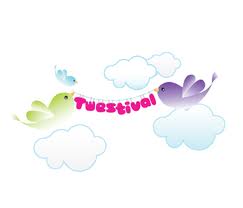 How does Twestival work?
How does Twestival work?
 In my humble opinion, non-profit professionals have two choices:
In my humble opinion, non-profit professionals have two choices: